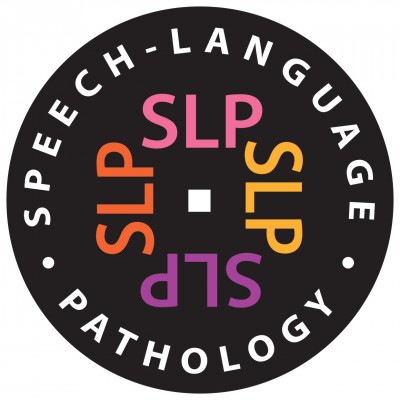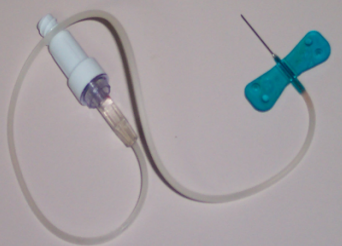Top 18 Speech Language Pathologist Interview Questions & Answers
1) Mention what is the responsibilities of a speech language pathologist?
- Speech Disorder: They treat people having speech disorder like fluency, voice/ resonance, articulation (speech sound disorder), etc.
- Assessment of patient: Performs patient assessment to see whether speech problem has an impact on the education, social/emotional, personal needs, etc.
- Enroll programs helpful to the patient: They provide program specially designed for patient who have a speech problem or who at the risk
- Bring literacy level high among students: It helps students to raise their level by helping them to overcome their speech impairment and makes sure that they receive same quality education as another student
- Individual treatment: They held individual education program for special cases
- Swallowing ability: They also check swallowing ability of the patient.
2) Mention what are the area special language pathologist can work?
Special pathologist can work with
- With Universities and schools
- With Community
- With Students
- With families
- With schools professional
3) What are the tools used by speech pathologist to treat a patient?
To treat a patient they use
- Adaptive communication switches like infrared switches, sound switches, touch switches, etc.
- Sound measuring apparatus like an ECG or laryngograph
- Stroboscopes
- Computer and tablet and the whole lot of app to treat speech impaired patient
- Therapeutic voice synthesizers and augmentative communication devices
- Various software likes speech analysis software, language analysis software and signal analysis software
- Medical devices like multi-speech device KayPENTAX, video voice, text to speech, etc.
4) Explain what is augmentative and alternative communication?
For communication among speech unable person, augmentative and alternative device is used. It decipher the signals made by hand, eyes, picture, body language, etc. Augmentative and alternative communication includes both aided and unaided system. Aided system includes books and special computers, picture charts, etc. Unaided system includes gestures and signing. AAC methods may be personalized to meet each individual’s needs.
5) Mention what are the skills or qualities must need to be a good speech therapist?
- People Skills
- Empathy
- Analytical mind
- Good listening skills
- Good logical reasoning
- Identifying Strength and weakness of the alternative solution
- Training and using instructional methods
6) Mention what are the approaches does the speech pathologist use for speech recognition?
For speech recognition mainly there are three approaches they use
- Acoustic Phonetic Approach
- Pattern Recognition Approach
- Artificial Intelligence Approach
7) Explain what is dynamic time warping?
Dynamic time warping is an algorithm used for measuring similarity between two sequences that may vary in time or recognition. Dynamic time warping is used to compare different speech pattern in automatic speech recognition.
8) Explain what is phonemic disorder? Is it curable?
Phonemic disorders are speech disorder that the individual has trouble physically producing certain sounds. Usually, person with phonemic disorders have trouble distinguishing sounds made by certain letters like all “c” or “t” s. With speech therapy, phonemic disorder can be improved, but to what percentage it depends upon individual case.
9) Explain what is the articulation disorder?
Articulation disorder is referred to the inability of an individual to pronounce certain words, due to the deformations of oral parts like palate, tongue, teeth, lips, facial nerves and muscles and sometimes respiratory system as well. Articulation disorder can be corrected with speech therapy or in certain cases can be minimized by operating surgeries.
10) Explain what causes speech disorder?
The causes for speech disorder can vary, it may be
- Development disorders (e.g.; Autism)
- Genetic syndromes ( Down syndrome)
- Illness
- Neurological disorders (Cerebral palsy)
- Hearing loss
11) Mention what is the speech screening test includes in an adult?
In an adult screening test includes standardized and non-standardized methods like
- To screen oral motor function
- Speech production skills
- Comprehension and production of spoken and written language
- Cognitive aspects of communication
12) Mention what documentation process is followed by speech pathologist while treating a speech impaired patient?
- Speech language pathologist maintains the record of patient
- Record of assessment is reported to the patient, family, caregivers or any concerned person of the patient.
- Reports are circulated to the referral source and other professionals with written consent
- Documentation of type and severity of the communication, related disorder, associated conditions except screening information
- Maintaining privacy and security of documentation in compliance with the regulations of federal law
- It also includes summaries of previous services in accordance with all relevant legal and agency guidelines
13) Mention what is the difference between articulation and phonological disorder?
- Articulation disorder: It is a disorder caused due to difficulties producing or pronouncing sounds, and the sounds may be added, substituted, omitted, added or deleted by other words. For example, school becomes cool, and spoon becomes thpoon
- Phonological disorder: Phonological disorder is usually seen in children altering the structure of words or change in the sound pattern like “do” for “go” and “tup” for “cup”.
14) Mention what is orofacial Apraxia?
Orofacial Apraxia is a neurological condition that affects motor movement and functioning of facial muscles.
15) Mention what are the symptoms of orofacial Apraxia?
- Minimum babbling during infancy
- Difficult in saying long or complex words
- Repeated attempts at pronunciation of words
- Stresses on certain words
- Excessive use of nonverbal forms for communication
- Distorting of vowel sounds
- Omitting consonants at the beginning and end of words
- Difficulty stringing syllables together
16) Mention what is the difference between Apraxia and Aphasia?
- Aphasia: It is described as an individual’s inability to understand or use of words due to brain injury or stroke
- Apraxia: It is described as an individual’s inability to initiate the movement needed to make a speech. This difficulty may persist despite the fact that there is no weakness in muscles.
17) List out some of the equipment’s used by speech pathologist?
Equipment used by speech pathologist are
- Sound pressure meter
- Suction machine to treat a patient with swallowing problem
- Flexible endoscope
- Passy Muir valves
- X-rays
18) In VSD or Velopharyngeal Dysfunction (VPD) what are the assessment steps?
- For the assessment, a nasometer is used to analyze acoustic energy emitted through the oral and nasal cavity during the production of speech
- Aerodynamic assessment, measuring oral pressure and airflow during speech, and the size of velopharyngeal gap
- Nasopharyngoscopy- to assess the function of the velopharyngeal mechanism
- Assess velopharyngeal closure during speech and phonation using videofluroscopy and lateral cephalographs







